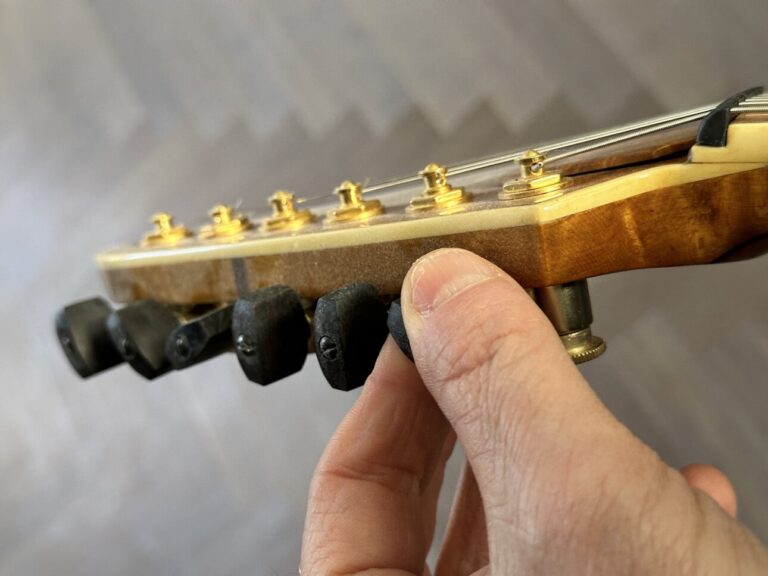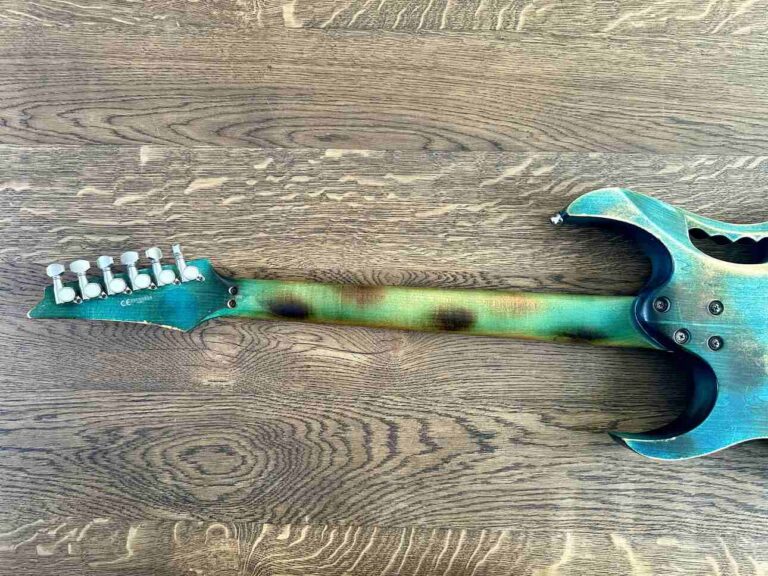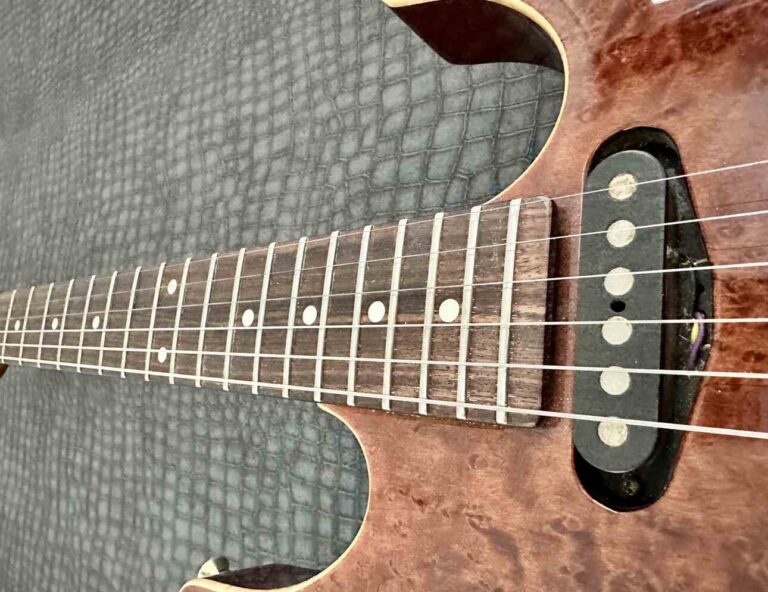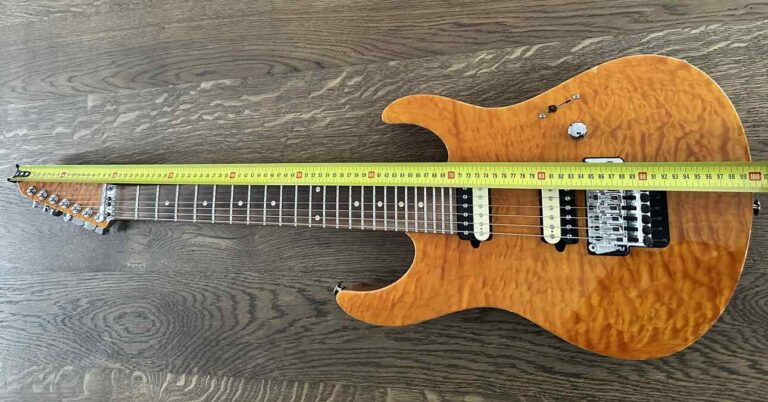Left Hand Guitar vs Right Hand Guitar: Choosing Your Best Match
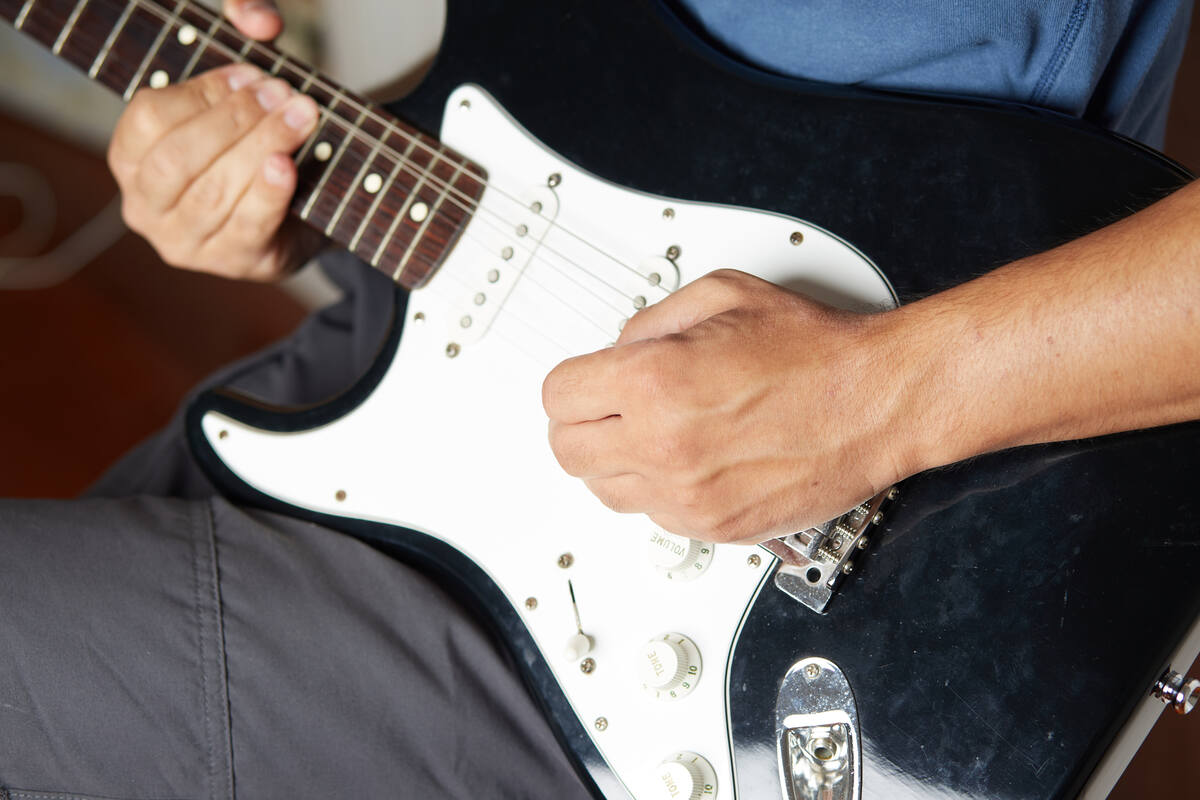
As a guitar player, left-hand and right-hand orientation makes all the difference. It’s not just about which hand strums the strings. It involves the entire approach to the instrument.
The implications of choosing a left-hand or right-hand guitar extend beyond mere personal comfort. It affects the availability of instruments. The choice also impacts learning. Instructional materials are predominantly geared toward right-handed players.
Wanna know more? Read on!
Key Takeaways
- The orientation of the guitar affects technique and playing style;
- Instrument and instructional material availability is influenced by hand dominance;
- Your choice of guitar orientation may impact the ability to replicate famous guitarists’ techniques.
Defining Left Handed and Right Handed Guitars
A right-handed guitar is strung, so when you hold the guitar with the neck pointing to your left, the thickest string is on top (closest to you). The thinnest string is on the bottom (furthest from you). Your right hand handles strumming or picking. Your left hand navigates the fretboard.
On the flip side, a left-handed guitar is the mirror image, with the neck pointing to your right. You do strumming and picking with your left hand while the right hand works the frets.
While left-handed guitars are much less prevalent, their availability has improved.
Physical Differences
String Arrangement and Fretboard
For left-handed guitars: The string arrangement is the mirror image of a right-handed guitar. This means the thickest string is on the top when holding the instrument, and the high E is on the bottom.
So, the fretboard and its markers are designed to accommodate the mirror positioning.
For right-handed guitars: The strings are arranged from the low E at the top to the high E at the bottom as you look down while playing. This layout is standard.
Body Shape and Ergonomics
Left-handed guitars often have a body shape that reflects a right-handed guitar. This design favors a left-handed player’s dominant hand positions and strumming patterns.
The contouring of the body is crafted to rest against your dominant side.
Right-handed guitars have a shape that fits the ergonomic needs of right-handed players. The curves of the guitar body are designed to fit against the right side.
It gives you stability and ease of access for your strumming or picking hand.
Playing Mechanics
The Roles of Dominant and Weaker Hands
Your dominant hand generally serves as the picking hand. It generates sound through strumming or plucking the strings. This hand’s movements are often rhythmic and dynamic, requiring precise timing.
In contrast, your weaker hand acts as the fretting hand. It presses down on the fretboard to change the pitch of the strings.
Despite the name, your weaker hand requires delicate control and strength. You need it for complex chord shapes and fast note transitions.
Strumming and Picking Techniques
- Strumming: Utilizes a sweeping motion by the strumming hand to play several strings at once for chords and rhythm;
- Picking: Involves using the picking hand to pluck individual strings. This allows for melody lines or more articulate rhythmic patterns.
Each technique benefits from the coordination of both hands. The dominant hand controls rhythm and dynamics. The fretting hand controls pitch and harmony.
Learning and Adaptation as a Left Handed Player
Challenges for New Guitar Players
As you start learning guitar, you’ll encounter a few hurdles in the natural learning process. Coordination between your hands is the first challenge.
This is especially true if you’re a left-handed player trying to adapt to a right-handed guitar. This coordination can be even more daunting for children’s music education. Kids’ motor skills are still developing, after all.
Another issue is the discomfort in the fingertips from pressing down on the strings. With time, your fingers will develop calluses, which makes playing more comfortable.
Memorizing chord shapes, scales, and strumming patterns takes patience and practice.
Techniques for Left-Handed Learning
If you’re learning to play the guitar with your left hand, there are specific strategies that might help you:
- Reverse Stringing: Some lefties restring a right-handed guitar in reverse order;
- Left-Handed Guitars: Opt for a guitar designed for left-handed playing. It provides ease and a better learning experience.
Using finger exercises and slow-tempo songs can improve your skill and muscle memory. Remember that visual learning materials must be mirrored to align with your perspective as a left-handed player.
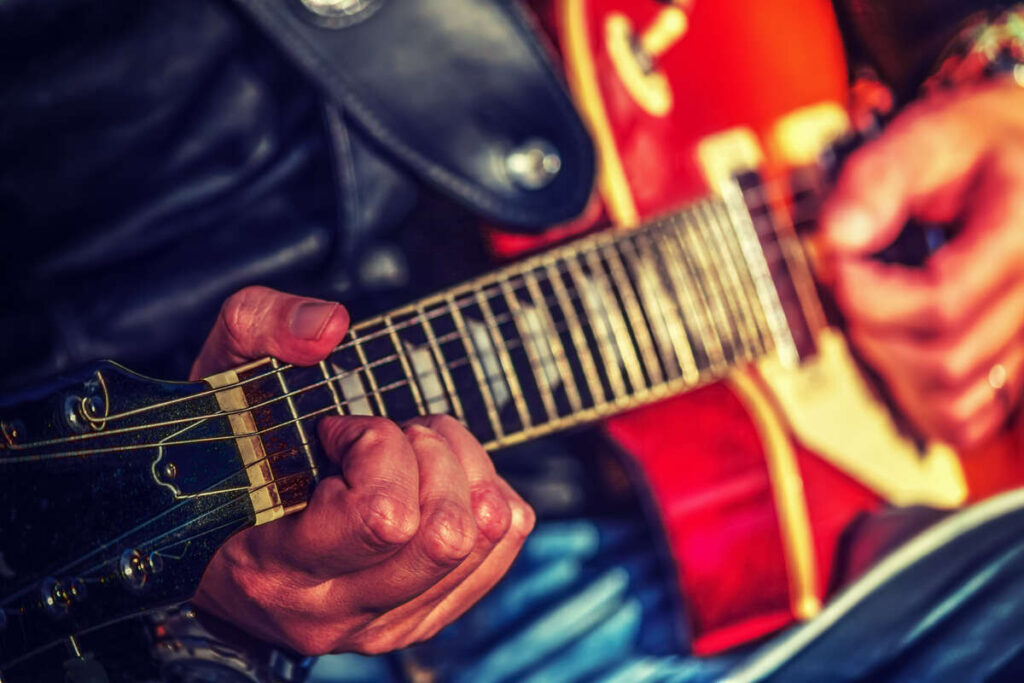
Instrument Availability
Market Variety for Left-Handed Guitars
In most guitar stores, various right-handed and left-handed guitars are available. But count on right-handed guitars easily surpassing left-handed options. There’s a much smaller selection of left-handed guitars.
This disparity can be notable, especially in local music shops. But large retailers or specialized shops for electric guitars will likely have more versions that suit lefties.
Customization and Modification Options
Customization is an option if your preferred guitar isn’t available left-handed. Many guitar manufacturers can change a right-handed (acoustic) guitar to suit left-handed play or vice versa.
Additionally, some stores specialize in transforming guitars on offer into left-handed instruments. Options range from simple string reordering to more complex adjustments.
You can think of altering the nut, bridge, and pickguard.
Cultural Impact and Famous Guitarists
When you think of guitar music, renowned guitarists often come to mind. There’s some pretty famous left-handers among them.
Influence of Notable Left-Handed Guitarists
Left-handed guitarists have made large contributions to the music industry. Their unique playing styles have influenced guitar culture. Jimi Hendrix is possibly the most famous example of this.
He played a right-handed guitar flipped upside down, and restrung it to suit his lefty guitar playing.
List of Notable Left-Handed Guitarists:
- Jimi Hendrix. He innovated guitar playing with his upside-down guitar technique;
- Tony Iommi (Black Sabbath), Kurt Cobain (Nirvana), and Paul McCartney (The Beatles) have also contributed to the culture of left-handed musicians.
Their approaches often required technique and instrument customization adaptations. This, in turn, lead to new sounds and influences.
The left-hand dominance in playing style added a different dynamic to their music.
Practical Considerations
You need to consider several things when choosing between playing left-handed or right-handed. What about personal comfort, accessibility of instruments, and costs associated with each option?
Evaluating Costs and Benefits
Costs:
- Left-handed guitars can be more expensive and less readily available than right-handed ones;
- You incur extra costs if you customize a right-handed guitar for left-handed playing.
Benefits:
- Choosing the correct handedness for your style may lead to a more natural and comfortable playing experience;
- Playing with the handedness that suits you best can result in faster progress and less frustration.
Decision Factors for Beginners
- Handedness: Identify your dominant hand. This is crucial since your dominant hand will likely have more dexterity and strength for intricate fingerwork;
- Comfort: Try out both right- and left-handed guitars. Go with the orientation that feels the most natural for strumming and fretting;
- Availability: Consider the availability of lessons and instructional material for your chosen approach. Most resources cater to right-handed players.
Understanding Guitar Orientation
History and Context of Guitar Handedness
The history of guitar handedness has evolved significantly. Originally, guitars were not designed with handedness in mind. Players adapted to the instrument regardless of their dominant hand.
Manufacturers began to recognize the necessity for handed guitars in the twentieth century. They started producing models specific to the player’s dominant hand.
This evolution facilitated greater accessibility and comfort for left-handed or right-handed guitar players. This allowed them to play with a natural orientation.
Frequently Asked Questions
How can I determine the best guitar orientation for me as a beginner?
The best guitar orientation for you depends on your dominant hand. A left-handed guitar might be more comfortable if you use your left hand for tasks. On the flip side, a right-handed guitar is likely the better choice if your right hand is dominant. Your comfort and natural inclination are the best guides to follow.
What are the differences in playing techniques between left-handed and right-handed guitars?
Playing techniques differ mainly in mirror reflection between left-handed and right-handed guitars. For example, chord shapes and strumming patterns will be flipped.
Are there any advantages to choosing a left-handed guitar over a right-handed one?
The advantages of choosing a left-handed guitar are most evident if you are left-handed. It can make fretting notes and chords more natural and intuitive. This leads to a swifter learning curve and more fluid play. But remember that left-handed guitars can be rarer and sometimes more expensive.
How should I properly hold a left-handed guitar?
Properly holding a left-handed guitar means sitting or standing with the guitar’s body against your torso. The neck should be parallel to the floor. Your right hand should strum or pluck the strings near the sound hole as your left hand fingers the frets. Ensure to always have a relaxed posture when you pick up a guitar to avoid strain.
Can playing a left-handed guitar affect the sound quality or tone?
Playing a left-handed guitar does not affect the sound quality or tone. These are mainly determined by the guitar construction, strings, and your playing technique. The tonal quality should remain consistent with the instrument’s capabilities. It doesn’t matter whether you play a left or right-handed guitar.
Do any right-handed guitarists prefer playing left-handed guitars, and if so, why?
Some right-handed guitarists prefer playing left-handed guitars. This is out of personal comfort or as a challenge to their adaptability. Jimi Hendrix was famous for playing with a flipped orientation. In the end, it comes down to personal preference and adaptability.


